SOCIAL AND POLITICAL STRATIFICATION
Group 3 Report
Take a walk around and observe your neighbourhood. You would possibly become aware of the differences among the people. People vary in the clothes they wear, the cars they drive, the houses they live in, the friends they associate with, and the job they do. They also vary in wealth, prestige, popularity, and many others.
We are talking or referring here about differentiation.
So what is differentiation?


Differentiation is the method of relating people in terms of certain social characteristics and then classifying them into social categories based on these characteristics. Differentiation does not involve ranking these categories. For example, we may describe people according to sex, age, occupation, education, religion, race, intelligence, wealth, etc. We then place them in a particular social category. We do not attempt to arrange these categories according to prestige or respect.
The layering of these six social categories into higher and lower position of prestige or respect is called social stratification.
What is social stratification?

➤ It is a society's categorization of people into socioeconomic strata, based on their occupation and income, wealth and social status, or derived power (social and political). In other words, stratification is the relative social position of persons within a social group, category, geographic region, or social unit....
➤ It is the relative social position of persons within a social group, category, geographic region, or social unit.

1. The Upper class - consists of the elite families who are the most prolific and successful in their respective areas. These are the groups of people who are stockholders, investors, and who live in an exclusive neighborhood. They value heritage the most....
2. The middle class - these are mostly professional people like lawyers, doctors, managers, owners of small businesses, executives, etc. They value education the most.
3. The lower class - these are the office and clerical workers, skilled and unskilled craftsman, farm employees, underemployed and indigent families. They depend on their paycheck.

And each class can be subdivided into strata, e.g. the upper-stratum, the middle-stratum, and the lower stratum. Moreover, a social stratum can be formed upon the bases of kinship or caste, or both.
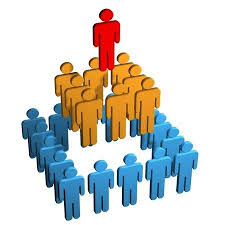
The individual's position in the social structure is called status. The higher or lower positions that come about through social stratification are called statuses.
Each person has status in the society in relation to other persons. Statuses do not relate to the individuals themselves but rather to the social category or position into which they have been placed.
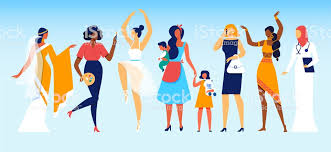
Statuses are not the same. We get different statuses in different ways. Some are ascribed statuses, which are assigned or given by the society or group on the bases of some fixed category, without regard to a person's abilities or performance.
Examples: sex, family background, race and ethnic heritage.

Achieved statuses are earned by the individual. Example, you become an actress singer because you won the search/contest "Starstruck".With achieved statuses, you establish which statuses you want. Frequently you struggle and exert more effort with others to get hold of them.

Prestige refers to the evaluation of status. You have prestige according to your status. For instance, being a senior student, you have the prestige of a senior student at your school. The prestige is not applied directly to you as a person, but rather to the social category to which you are in, the senior class. Your high or low class standing during your junior year doesn't matter. You still have the prestige of being a senior.
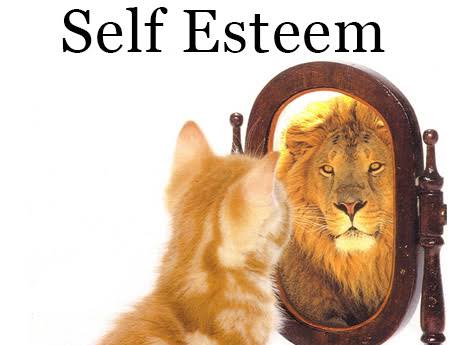
Esteem refers to the assessment of our role behavior. The measure of esteem we have depends on how well we carry out our role. If your perform well, get an outstanding rating, and awarded an academic scholarship to college, you get and have high esteem.
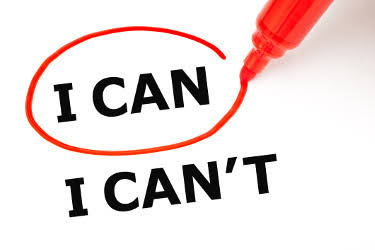
Prestige is based on your status, and esteem is based on your role behavior. For instance, if you just passed the 11th grade, you still have the prestige of being a senior. But you do not have high esteem. On the other hand, you can have high esteem withough having high prestige

Karl Marx (1818-1883), said that the organization of a scoiety is determined by economic forces. According to Karl Marx it was the Industrial Revolution that divided society into two social classes.
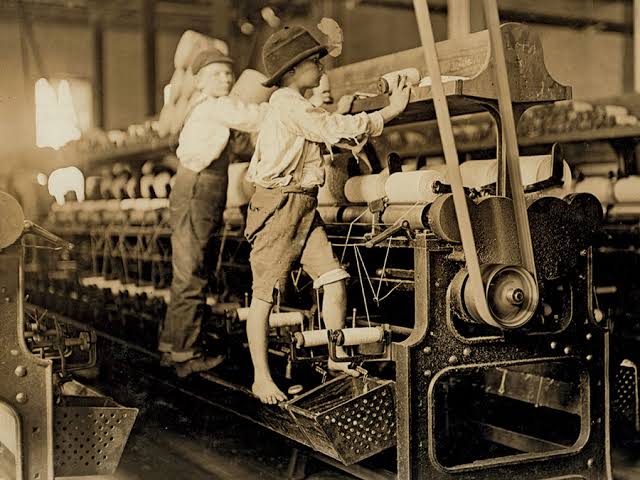
A social class is generally referred to as a number of people who are grouped collectively because they have similar professional/occupational statuses, amount of prestige, or lifestyle. Marx believed that the Industrial Revolution formed a capitalist class of rich people who owned the factories, and other forms of production or industry. And from there on, groups of workers were produced to work for them and become dependent on the capitalist for the wages they would receive.
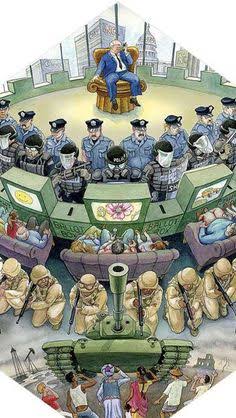
Political stratification is the extent to which inequalities are encapsulated in, or influenced by, political structures and processes regarding, influence, power and authority. Power at this point is implicit not only in achieving needed results, and also even against opposing interest, including the capability to structure and set agendas
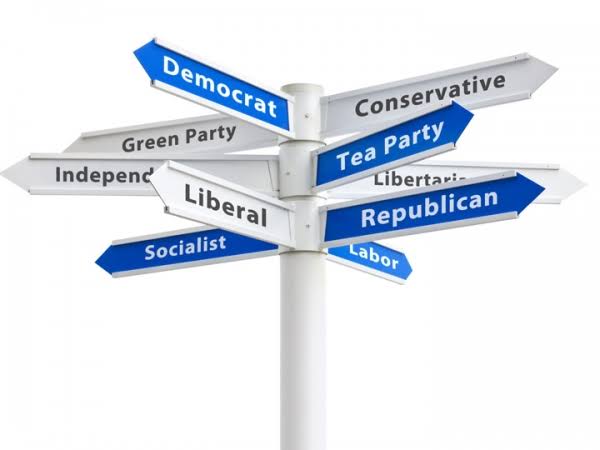
Political stratification from an institutional perspective can be related to laws, norms, values, class structures, associations, and status groups, which structure or form the relations among individuals and group of actors.
It can be expressed in many different ways. At this time individuals are at the front position and, during the constant acts of self-definition, construe and make sense of norms and values as they interrelate with each other.

Political stratification is categorized by power volume. Power is the ability to carry out the spirit to delineate and take charge of activities of other people through various ways. Therefore, the power volume is measured, first by number of people on which the high-handed judgment extends.
It concerns the unequal distribution of political rewards and inequalities in access to political offices.

The act of moving from one social status to another is called social mobility. Social mobility makes the inequality of social class reasonable and, in the point of view of some, even justifiable.

Open class system means that individuals can change their social class position in the society. The degree of downward individual mobility is one of the tests of an open class society. If mostly all people remain in the social class rank of their parents, then we call it a closed class society in which acknowledgment accounts for more than achievements.

Though "caste" and "closed-class system" are approximately the same things, the concept of open and closed classes is more useful than the concept of caste, because it can be used as a measure of the amount of mobility in different societies. If a society has many individuals who came from lowly homes and rose to high positions, along with others who fell down from status of either parent, then we can say there is high degree of social mobility and an approximation of the open-class society. A society where only a few rise or fall from their parental status is closer to the caste system.
People may change their social class position of two ways.
1. They can move from one position to another position within their social class.
2.They can move into another class.
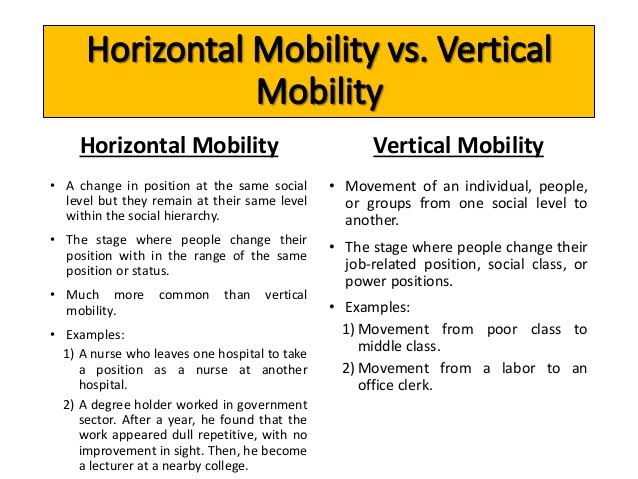
Horizontal mobility is the movement of a person within a social class level
Vertical mobility is the movement of a person between social class levels
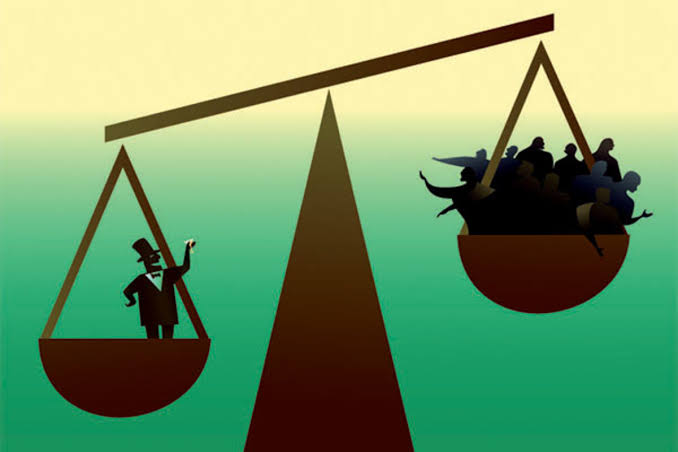
The existence of uneven opportunities amd rewards for a diverse social positions or statuses within a group or society is referred to as social inequality.
Social inequality occurs when resources in a given society are distributed unevenly, generally through norms of allocation, that bring about specific patterns along lines of socially defined categories of persons.
Economic inequality is the most frequently studied type of social inequality
Social inequality is shaped by a range of structural factors, such as geographical location or citizenship status, and are often underpinned by cultural discourses and significant identities.


Sex and gender-based prejudice and discrimination, called sexism, are major contributing factors to social inequlity. Almost all societies have some sexual division of labor. The emphasis on gender inequality is born out of the deepening division in the roles assigned to men and women, particularly in the economic, political and educational spheres.... Gender discrimination has been a topic of discussion not only within academic and activist communities but also by government agencies and international bodies such as the UN. By making use of gender analysis, researchers try to understand the social expectations, responsibilities, resources, and priorities of women and men within a specific context, examining the social, economic and environmental factors which influence their roles and decision-making capacity.


Cultural ideas about women's work can also affect men whose outward gender expression is considered feminine within a given society
A diversity of universal issues like HIV/AIDS, illiteracy, and poverty are often seen as "women's issues" since women are disproportionately affected.
In many countries, women and girls face problems such as lack of access to education, which limit their opportunities to succeed, and further limit their ability to contribute economically to their society.
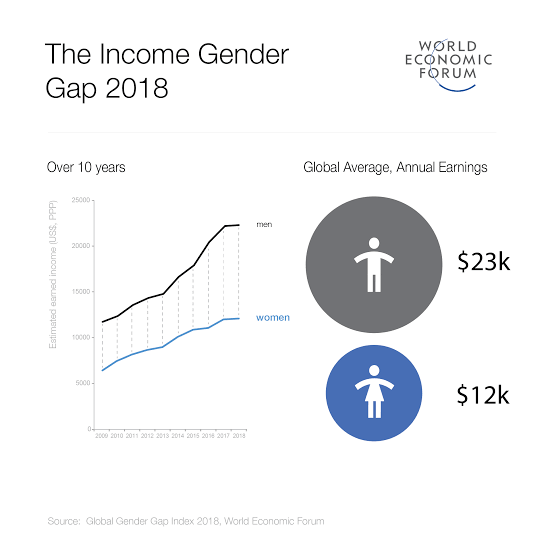
Women are underrepresented in political and decision-making activities
Salary discrepancies
Glass Ceiling


Lowering the chances of women to stand out is one of the consequences that can be observed in the corporate and bureacratic environments of many countries. It also prevents women from succeeding and using their potential to the fullest.

Women and those people whose gender identity does not conform to patriarchal beliefs about sex endure to face aggression or hostility on global, domestic, interpersonal, institutional and administrative scales.
On the first wave, Liberal Feminist initiatives raised awareness about the lack of fundamental rights and freedoms that women have access to; the second-wave, feminisim highlighted the structural forces that caused gender-based violence.
The modern concept of women as people with full legal rights is a relatively new idea for many years. Like in the United States, in the 1940's, eleven states did not permit a woman to maintain her own earnings without her husband's approval. Sixteen states ruled that a married woman could not make legal contracts. In seven states, women were banned from serving on juries. And many states controlled the kinds of job that women could hold.
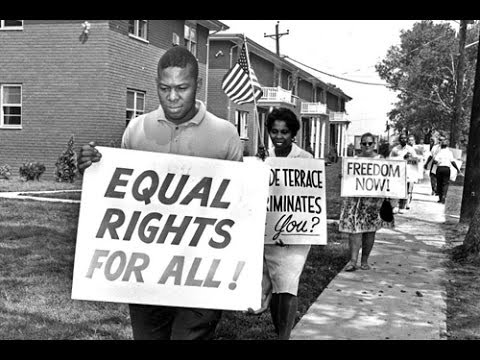

In 1848, a group of women led by Elizabeth Cady Stanton, held a convention in Seneca Falls, New York, to have a discussion about women's rights and this marked the start of the women's suffrage movement.
They achieved the suffrage by 1920.

The "modern women's movement" is the progression of actions that have occured since the year 11950's. There are important factors that laid the foundation for this movement.
➤ First, there was the long history of suffragist activity in the US. As we have seen, the suffragist movement dates back to the 1840's...
➤ Second, women had been called out of home during World War II. They had worked in factories, in shops, and on farms while men were away
➤ Third, advances in medical science and public health give women more choices. During the 1950's and early 1960's improved methods of birth control allowed women to limit they number of children they had. Their life expectancy also improved.
➤ Fourth, the advances in technology shorten the amount of time women required to involve them with household chores. (availability of canned foods, washing machines and dryers, electric floor polisher, vacuum cleaners will certainly reduce the work needed to wash clothes and clean the house.
As more women began to use their new choice and move out into work world, they found that their new environment did not have the structures they needed. Women were at the bottom of the job ladder. It is a practice that many executive and professional jobs that paid high were held in reserve for men. In industry, women were "protected" from jobs that might require heavy lifting or night work. However, it was these jobs that in some cases led to promotions

Another problem was the lack of day-care centers or similar child-care facilities. If women were to be away from home during the day, they needed some form of suitable care for their children.

In the past, women thought of special work-related problems, such as not being offered the same promotion opportunities as men as personal problems. Then, they began to see them not just problems of individual women but as problems of the society as a whole. These issues were political problems, involving government policies or lack of policies. Thus some women turned to political action.

One of the first political battles centered on the Civil Rights Act of 1964. This law forbade discrimination part of the law was not being enforced. There is a legal action called the writ of mandamus, by which citizens can force public officials to do the job they are supposed to do....
Gradually, things began to change. Sex, discrimination laws began to be enforced. Educators began to look at how they were steering women into lower-paying, lower status fields. Women began to get top-level jobs in government and business. And the public began to see women reporting the news on television instead of just appearing in commercials for cleaning products.
Racial or ethnic inequality is the consequence of hierarchical social distribution between racial and ethnic categories within a society and are often recognized based on characteristcs such as skin color and other physical characteristics or an individual's place or origin or culture. Despite the fact that race ha sno biological correlation, it became a socially constructed category which is capable of restricting or enabling social status.


Members that have more power than other people in a society that are called the dominant members. Dominant members set the standards and establish the values and norms of the society. By controlling powers, the dominant members enjor certain priveleges, such as better housing, better schools and higher incomes. And to maintain their favored position, dominant members of a society must protect or defend their power over other people within the society. Other people, who are barred from some degree of power, prestige or wealth, are called minorities and are usually denied equal treatment by the dominant members of the society. At the end, they belong to the lower position within the society.
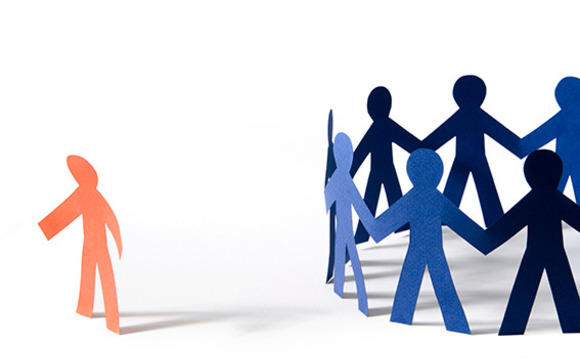
Minorities are being deprived of equal treatment and are kept in a lower status by the dominant members of the society and the resistance of equality is called discrimination. Discrimination is a damaging act, which can take many forms. It could be an individual act, such as calling someone a malevolent name. And the most tremendous form, could lead to physical harm or the threat of physical harm....
Closedly linked to discrimination is prejudice. Prejudice can be either positive or negative. We can be prejudiced toward someone. We can be prejudiced toward the people of our own locality.
Most often, prejudice is negative. Prejudice is defined as a negative attitude toward the members of a particular group

Prejudice is a preconceived idea of "prejudgment" of others that allows us to brand/label them in various pessimistic ways.
How does prejudice differ from discrimination? Discrimination is an act while prejudice is an attitude.

More often than not, prejudice involves stereotyping which refers to our propensity to picture all members of a particular category as having the same qualities. It is usually a result of overgeneralization


The belief that our own nation, race or group is the best is called ethnocentrism. The consequence is we suppose that other groups or societies are inferior to our own. We also believe that we all belong to social or cultural groups and have a tendency to believe that "we" are better than "they".
This is a situation when people encounter problems that they do not know how to solve. Often, they feel frustrated. From time to time, this frustration can lead to aggression.


It is the thinking that one's own race is superior and has the right to control or direct others. It provides a means for reducing minorities to a lower status.
It is a fact that in every society there are some people whose manner of life departs from the principles of the society as a whole. When people dwell in a society that does not share their cultural heritage, they are labeled an ethnic minority. Ethnic minorities then, are people whose cultural background differs from that of the dominant members of a society. They also experience discrimination.
1. MIGRATION
When people move, or migrate, from one society to another, they are commonly called minorities in the new society. Migration could be voluntary or involuntary.
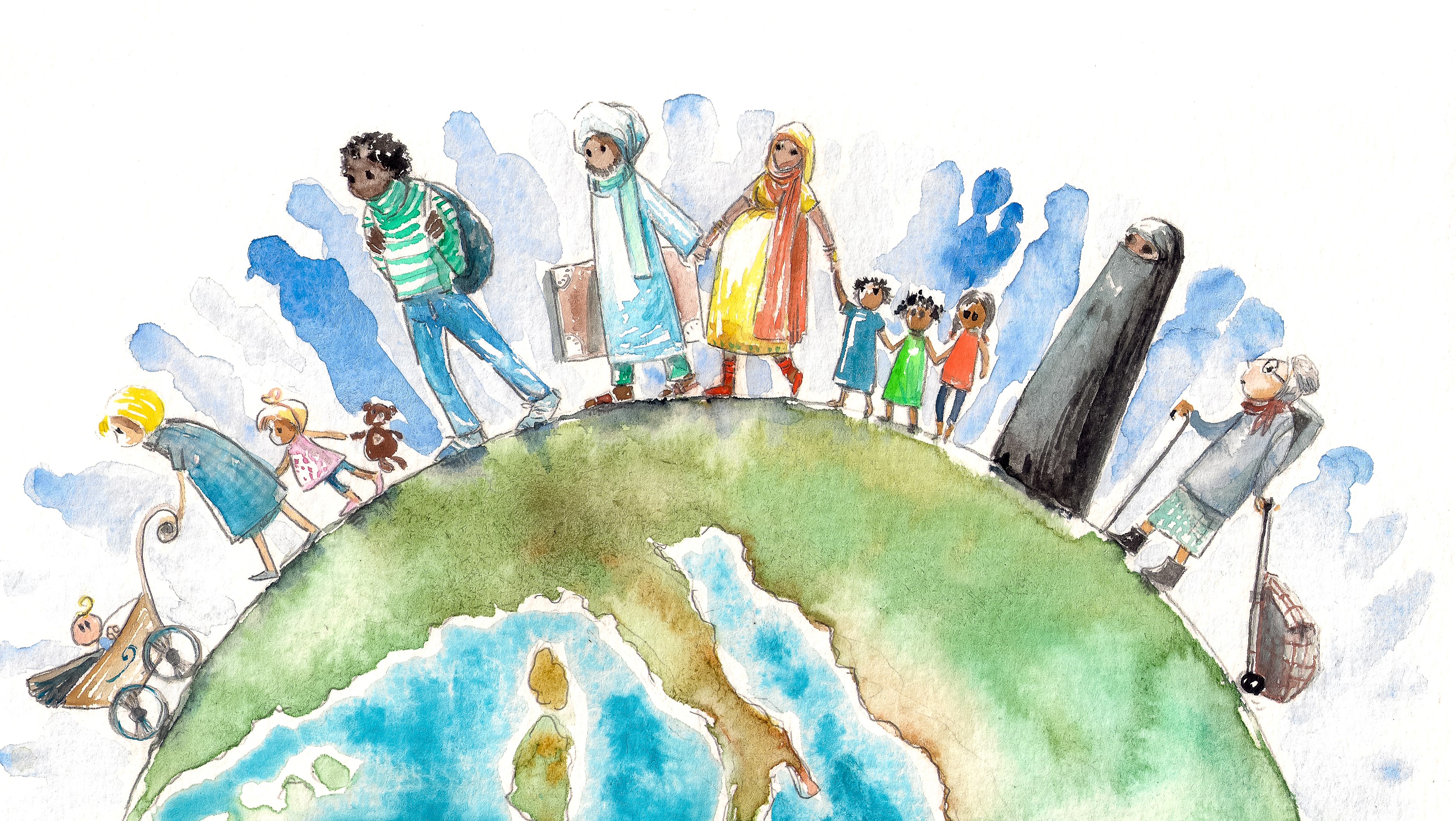
2. COLONIALISM
Some people become minorities in their own country, without ever leaving their place of birth. This happens when people from another country decides to settle in a new land and then take control of the society.

3. ANNEXATION
Citizens may turned out to be minority when their country is joined, or annexed, to another nation. Annexation could either be voluntary or involuntary. Annexation usually happens after a war ends.
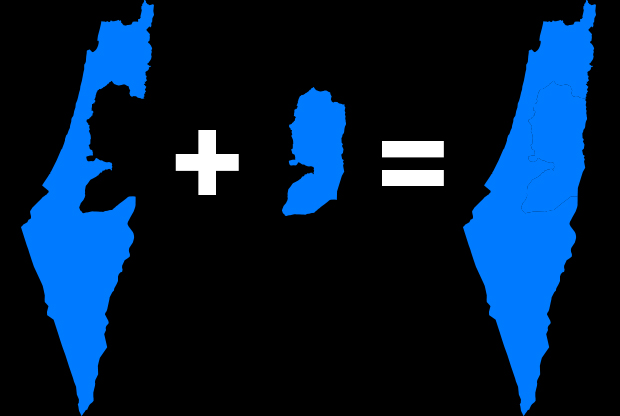
1. EXTERMINATION
The most tremendous form of rejection by dominant members of a society toward minorities is to kill or exterminate them. Extermination is the most brutal of all the treatments of minority people.
The most dreadful example of this is the mass extermination of roughly six million Jews by Hitler's Germany in World War II.

2. EXPULSION
Expulsion is less severe form of rejection. compared to extermination. It is the elimination of the minority group from the dominant society. Sometiemes, minoritie sare expelled to an unused tract of land.

3. SEGREGATION
The minority may be segregated or isolated, in specific neighborhoods. Segration is the spatial separation of the minority from the dominant members of the society.

4. CULTURAL PLURALISM
Another form of dominant-minority relationships is cultural pluralism. It is the acceptance and recognition of cultural differences in subgroups among the residents, with no single subgroup dominating the others.

5. ASSIMILATION
The usual pattern of blending, or assimilating, is that minorities try to be similar to the dominant members of society. Assimilation has occured when previously distinct social categories blend into one unified social category.
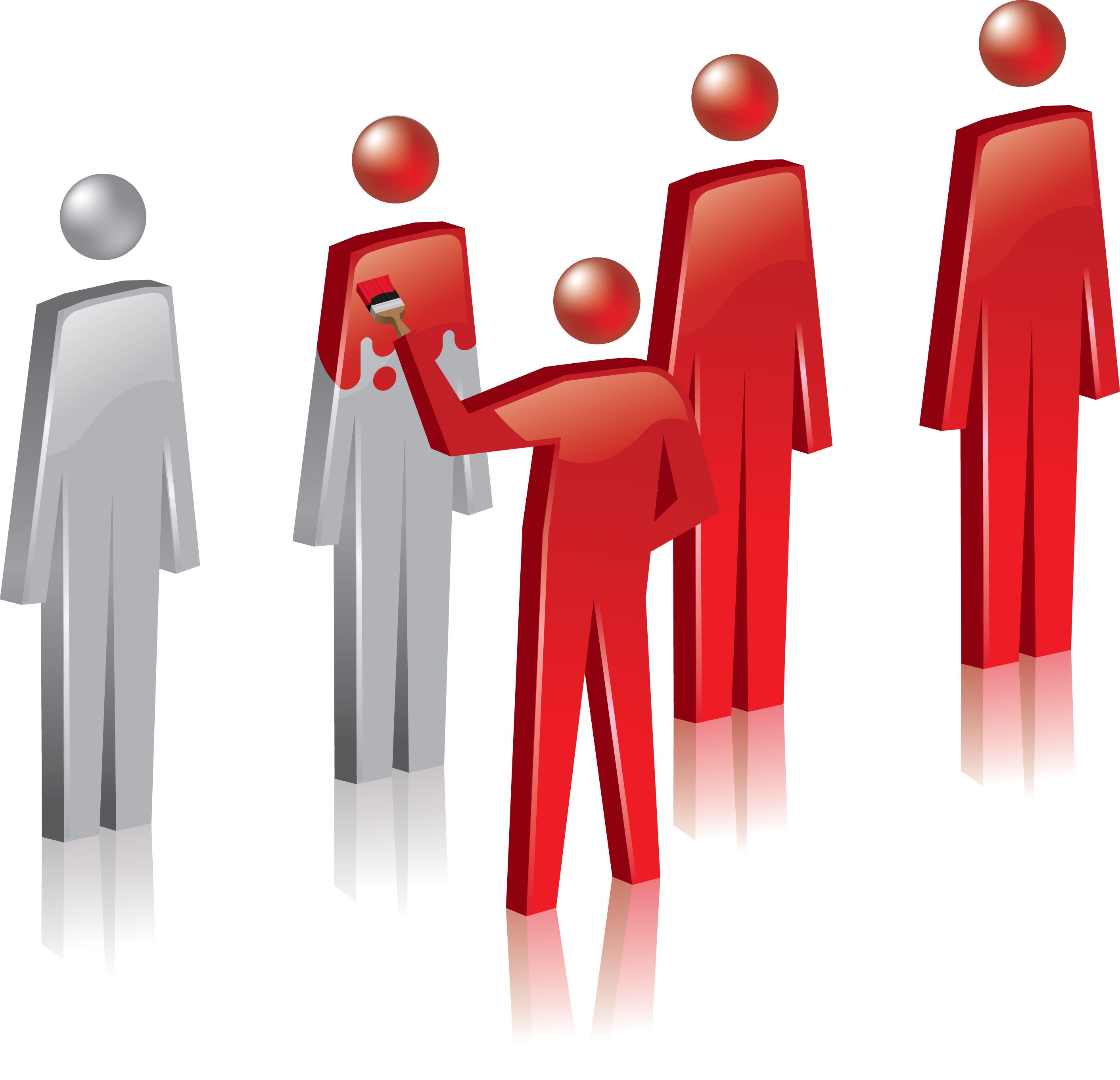
6. AMALGAMATION
Amalgamation is the blending through accepted intermarriage. Through this process, the differences between dominant and minority members of the society disappear.
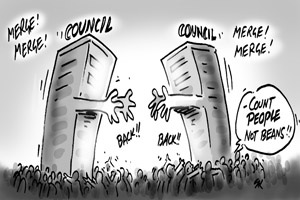
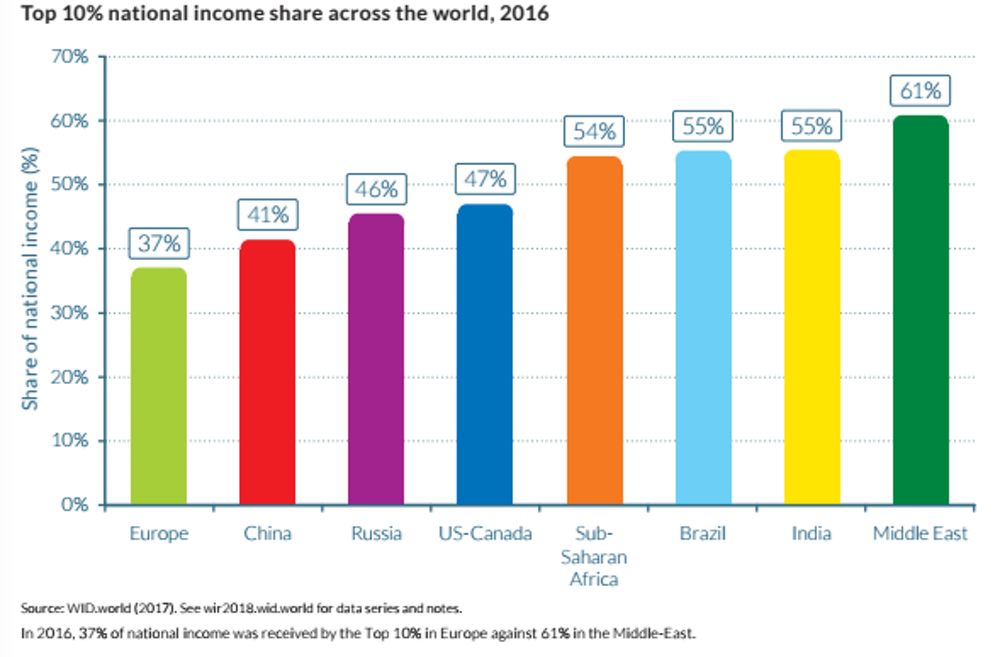
The financial systems of the world have developped unevenly, historically, such that the entire geographical regions were left stalled in poverty and illness, while the rest of the world began to reduce poverty and illness. This was represented by a type of North-South divide that exised after WWII among the First world, more developed, industrialized, wealthy countries and Thirld world countries, primarily as measured by GDP. From 1980, on the other hand all the way through at least 2011, the GDP gap, while still wide, appeared to be final and, in some more rapidly developing countries, life expectancies began to increase. There are frequent restrictions, though, of GDP as an economic indicator of social "well-being".

Gobal inequality is an intensifying worry for elites. According to WEF, income inequality is currently the number one global concern and even economic elites now worry over the impact on society of th escalating wealth divide.

Some economists think that economic equality is an essential prerequisite for economic growth. Latest research, however, has called this basic assumption into question. Economic inequality does have a positive correlation with economic growth, but inequality in general is not positiveley correlated with economic growth. Under some conditions, inequality shows a negative correlation with economic growth.


There is no simple answer to that straightforward question. Branko Milanovic, a senior scholar with the Luxembourg Income Survey not at the City University of New York's Graduate Center, has done the world's nost rigorous resaerch on the global income inequality picture. His latest... research, published in Decemeber 2014, carries the theme "national vices, global virtue." Milanovic notes that inequality within nations is increasing, but inequality worldwide seems to be slightly decreasing as middle claases emerge in China and India and the incomes of typical families in the United States and other rich countries stagnate and even as inflation decreases. But this slight worldwide decrease in overall inequality, Milanovich cautions, may be somewhat illusory since available national data regularly underestimate top 1% incomes and global tax havens conceal still more income at the economic summit.
According to the 2014 Pew Global Attitudes Survey, in the seven Sub-Saharan African nations polled, over 90% of the respondents consider the gap between rich and poor as a big problem. Political leaders increasingly share these concerns
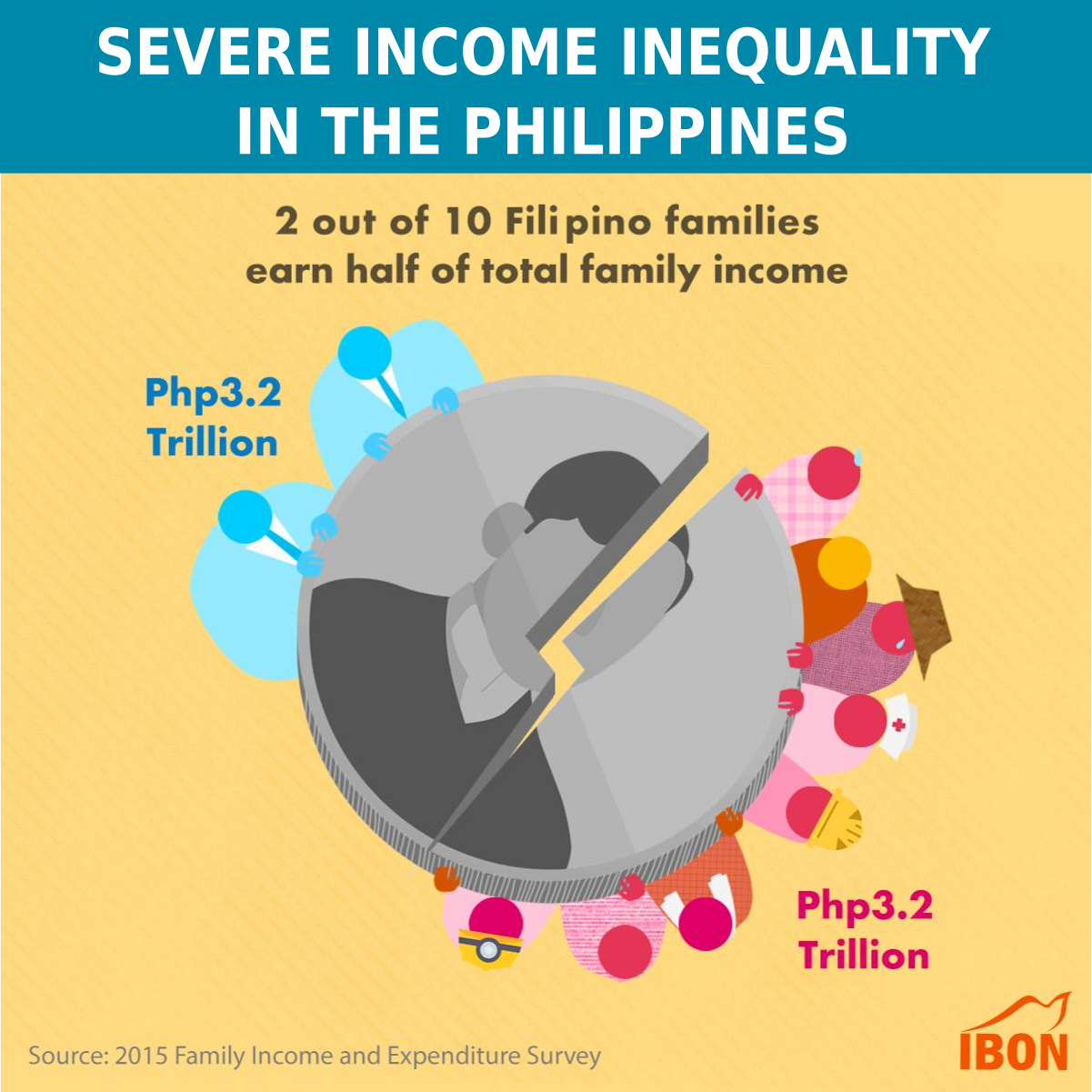
Countries need to embrace/adapt an integrated program that looks at the problem accross the social, economic and environmental dimensions, as well as access to education, health care and resources to effectively solve inequality. Vital to these solutions is a host of interventions that promote equitable access to resources and services, as well as inclusive growth with decent jobs and livelihoods for all people within society.

1. IMPROVED EDUCATION
2. TAX POLICY
3. SOCIAL WELFARE POLICY
4. REDISTRIBUTION
5. JOB CREATION
6. WORKFORCE DEVELOPMENT
When people think of the word 'disability" they right away imagine someone in a wheelchair. But there are many types of disability.
A disability is normally a condition either caused by genetics or disease, accident, trauma, which may hamper a person's mental, sensory, or mobility functions to carry out or perform a task in the same way as a person who does not have a disability.

Disability is a result of an impairment that may be physical, cognitive, mental, sensory, emotional, developmental or some combination of these. A disability may be present from birth, or may happen during a person's lifetime.

According to WHO, individuals may qualify as disabled if they have had an impairment in past or are seen as disabled based on a personal or group standard or norm.
Several advocates object to claasifying certain conditions especially deafness and autism as "disabilities".
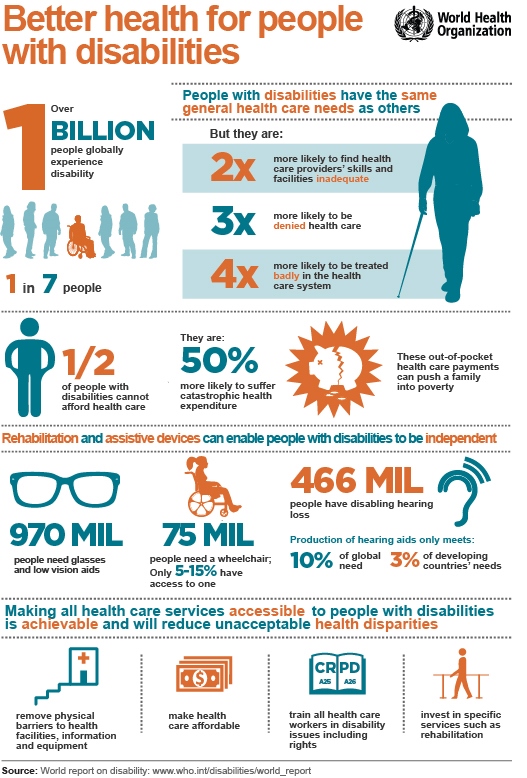
Conditions causing disability are classified by the medical community as
a. inherited(genetically transmitted);
b. congenital, meaning caused by a mother's infection or other disease during pregnancy;
c. embryonic or fatal development irregularities, or by injury during or soon after birth;
d. acquired, such as conditions caused by illness or injury;
e. of unknown origin.

➤ SENSORY DISABILITY
It is an imapirement of one of the five senses
a. Vision impairment
This functional loss of vision is typically defined to manifest with:
1. best corrected visual acuity of less than 20/60, or significant central field defect.
2. significant peripheral field defect including homonymous or heteronymous bilateral visual,
3. field defect or generalized contraction or constriction of field, or
4. reduced peak contrast sensitivity with either of the above conditions.
b. Hearing impairment
A condition in which individuals are fully or partially incapable to recognize or perceive at least some frequencies or sound which can typically be ehard by most people.

➤ INTELLECTUAL DISABILITY
It ranges from mental retardation to cognitive deficits too mild or too specific to qualify as mental retardation.
➤ MENTAL HEALTH AND EMOTIONAL DISABILITY
It is a psychological or behavioral pattern generally associated with subjectiveness distress or disability that occurs in an individual, and perceived by the majority of society as being outside of normal development or cultural expectations.
➤ DEVELOPMENTAL DISABILITY
Any disability that results in problems with growths and developments.
➤ NON-VISIBLE DISABILITY
Examples of these are several chronic disorders: diabetes, astthma, inflammatory bowel disease, epilepsy, narcolepsy, fibromyalgia, and some sleep disorders.
The Autism Society of the Philippines works untiringly for the protection of the rights and enhancements of the benefits available to persons with autism and their families.
The following are the laws and implementing guidelines in effect in the Philippines, which champion the cause of persons with autism and disabilities.

REPUBLIC ACTS
1. Anti-Bullying Act
Republic Act Number 10627, dated June 5, 2013. This republic act states that....
2. Equal Oportunity Employment
3. Accesible Polling Places Exclusively for Persons with Disabilities and Senior Citizens
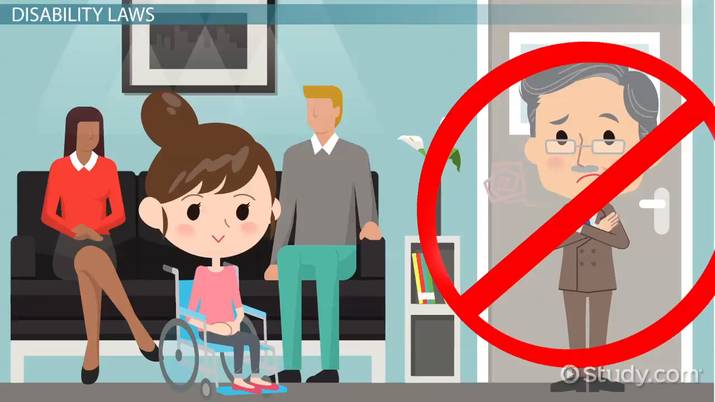

This is for persons with disabilities in every province, city and municipality.
Republic Act Number 10070, dated July 27, 2009. PDAO shall be created in every province, city and municiplaity. The local chief executive shall appoint a PWD affirs officer who shall manage and oversee the operations of the office, pursuant to its mandate under this Act.

Republic Act Number 7277, dated March 24 1992. This law provides for the rehabilitation, self-development and self-relianceof disabled persons and their integration into the mainstream of society and for other purposes.
a. DOT Memorandum Circular No. 2011-04, dated February 11, 2011. This clarifies the conditions around 20% discount entitlements to disabled persons.
b. DILG Memorandum Circular 20019-129, dated September 9, 2009. This clarifies the procedure of issuance of IDs and booklets for PWDs.
c. Joint DTI and DA Administrative Order 02, dated July 27, 2009. This calrifies rules and regulations on the grant of special discounts to persons with disability on the purchase of basic necessities and prime commodities.
Others laws are R.A. No. 9442, Implementing Rules and Regulations for RA 9442 and Implementing Rules and Regulations for RA 7277.
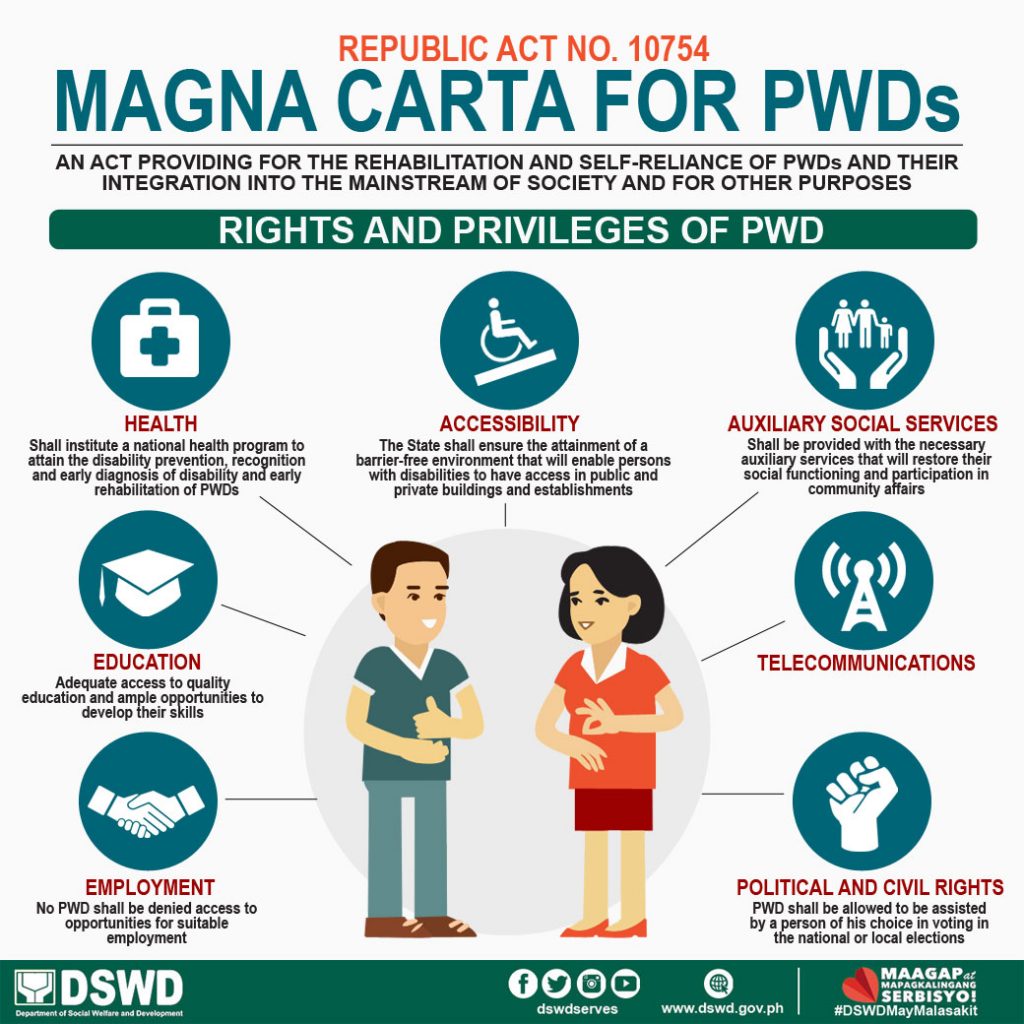

UN International day of Persons with Disabilities
Presidential Proclamation No. 1157, dated 16 October 2006.
National Disability Prevention and Rehabilitation Week
Presidential Proclamation No. 361, dated 29 August 2000.
National Autism Consciousness Week
Presidential Proclamation No. 711, dated January 1996.
National Commission on Disability Affairs
Presidential Decree No. 1509, dated 11 June 1978.
Community-Based Rehabilitation for Persons with Disabilities
Executive Order No. 437, dated 21 June 2005.
Economic Independence for Persons with Disabilities
Executive Order No. 417, dated 27 March 2005.
Other Policies
DepEd Child Protection Policy, dated 14 May 2012. The documentation outlines the Philippine Department Of Education's Policies and Guidelines on protecting children in school from violence, exploitation, discrimination, bullying, neglect, abuse, cruelty and other conditions prejudicial to their development.


To asses the retained information of the class from the knowledge we have imparted, we prepared a two-minute quiz for you. Click the button below and you will be redirected to the questions.